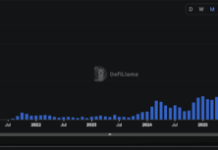The announcement of the imminent distribution of the Bitcoin (BTC) previously stolen from Mt. Gox in 2014 has sparked a mix of concern and speculation in the world of cryptocurrencies. However, recent comments and analyses suggest that fears of a significant negative impact on the market might be exaggerated.
History of Mt. Gox and the current context of the reimbursement with Bitcoin
Mt. Gox, once the largest crypto exchange in the world, collapsed in 2014 following a series of thefts that saw almost 850,000 BTC disappear from its coffers. After years of legal battles and judicial proceedings, the administrators of the failed exchange have finally reached a stage where they can begin to return the recovered Bitcoin to creditors.
In the recent announcement, the administrators indicated that the distribution of the recovered funds will begin in the first week of July. This move immediately raised questions about the potential selling pressure that could arise when these Bitcoins enter the market, given their high value – currently, the amount is around 10 billion dollars.
Despite the initial concerns, many traders and analysts now believe that the impact of these refunds might be less dramatic than expected. One of the main reasons for this reassurance is the anticipated behavior of the creditors, many of whom were affected by the hack years ago and might be inclined to hold onto their BTC holdings rather than sell them immediately.
According to a recent report by Galaxy Research, it is likely that a significant portion of the distributed Bitcoin will not be sold immediately. Many creditors acquired these Bitcoin at very low prices before the 2017 boom and, therefore, may not feel pressured to sell immediately due to tax considerations or the potential appreciation in the value of BTC.
Implications for the cryptocurrency market
The idea that many creditors might decide to hold onto their Bitcoin not only mitigates the fear of a massive sell-off, but could also further stabilize the market. The reduction in volatility and the lower selling pressure could attract new investors who were previously cautious.
Furthermore, the reintroduction of these Bitcoin into the market represents a sort of test for the maturity and resilience of the cryptocurrency market. A measured response to this distribution could strengthen investors’ confidence in the cryptocurrency financial system, showing that the market can absorb even significant events without undergoing extreme turbulence.
As we approach the start date of the distribution, it will be crucial to monitor several indicators. The trading activity, the trading volumes, and the reactions of major investors will all be critical indicators of the real impact of the reintroduction of these Bitcoins.
Investors would do well to stay informed and, if possible, to prepare to take advantage of the opportunities that could emerge from this unique situation. Investment strategies might need adjustments, especially if the market situation were to diverge from current forecasts.
Conclusion
The initial fears regarding the potential redemption of Bitcoin by Mt. Gox seem, at least for now, to be exaggerated. While the situation remains fluid and worthy of attention, the current outlook suggests that the cryptocurrency market might be more resilient than initially feared. This episode could not only test the resilience of the market but also strengthen the general confidence in cryptocurrencies as a mature and stable asset class.







